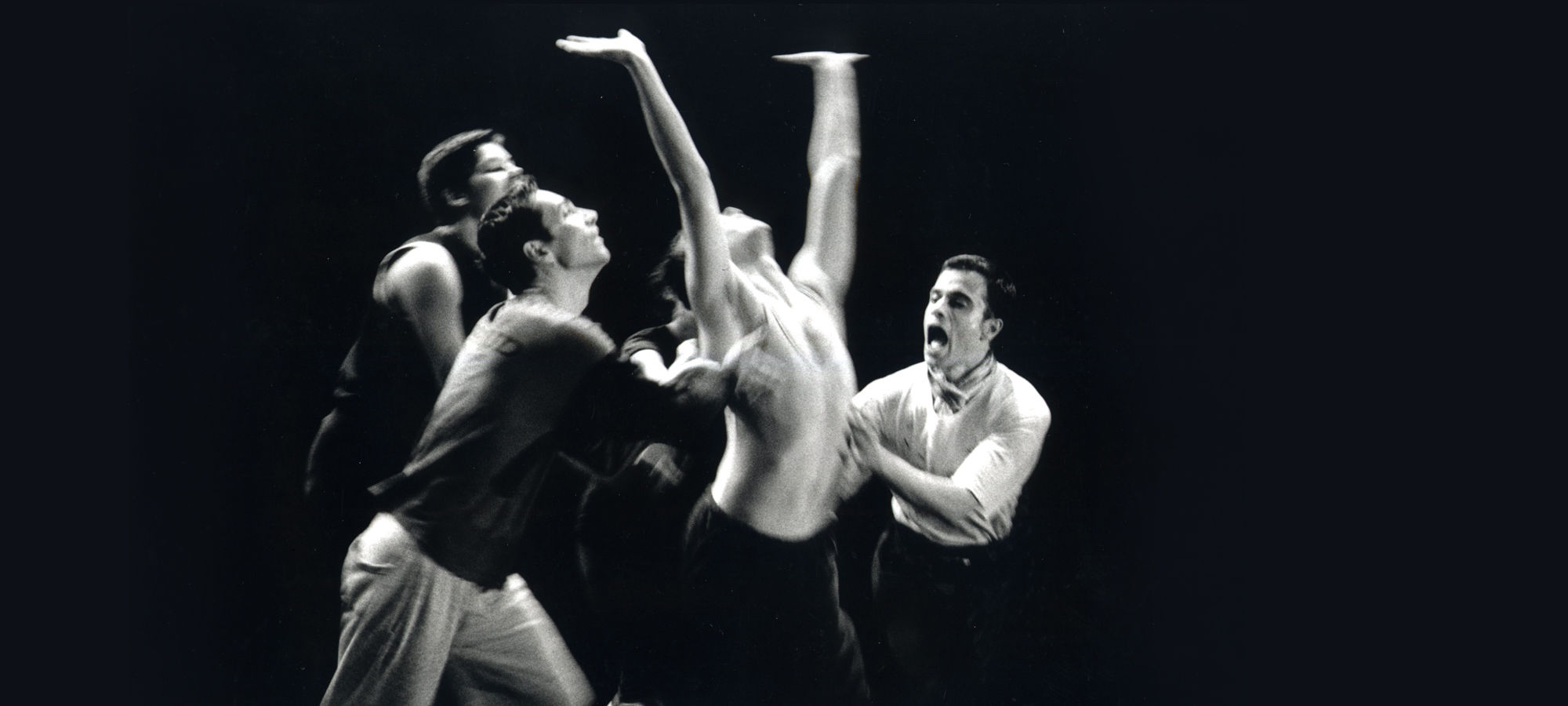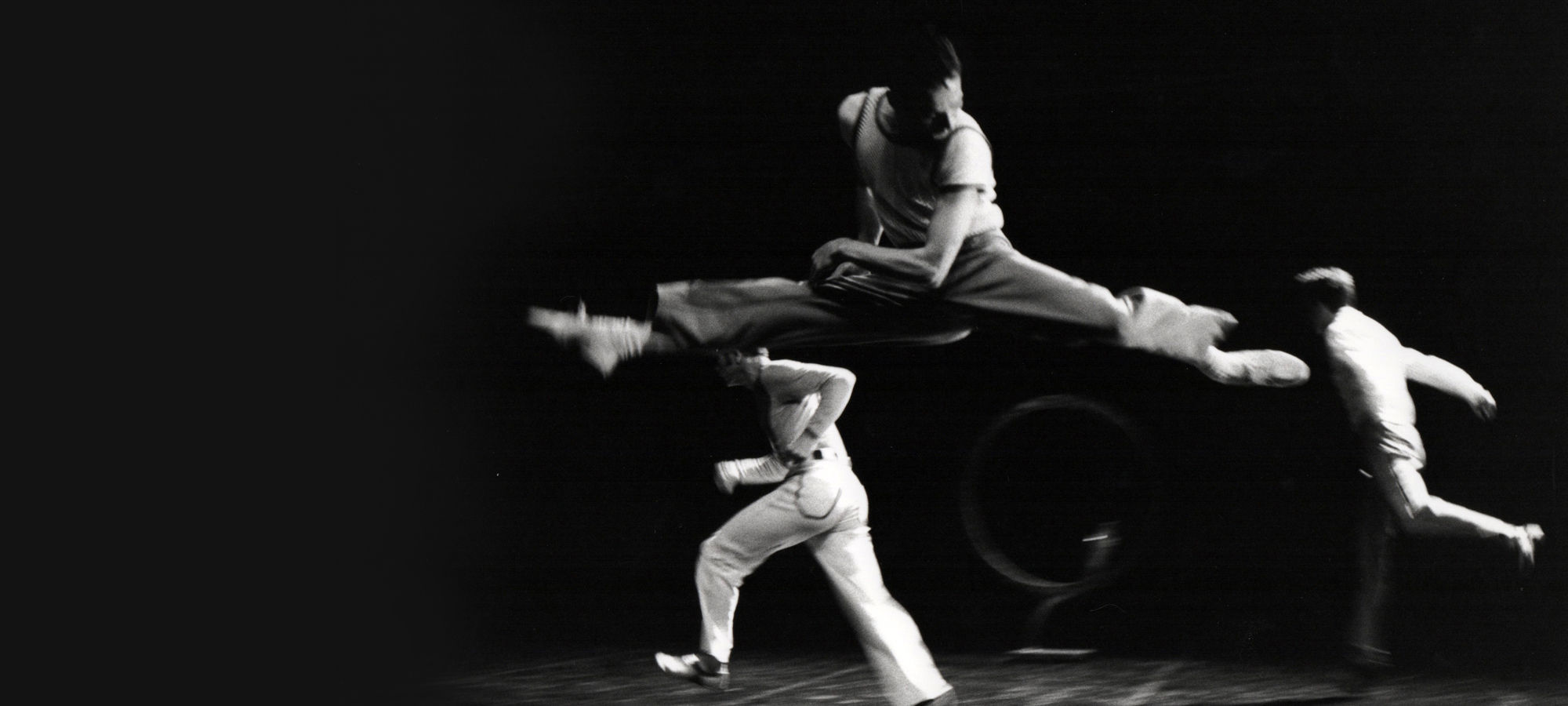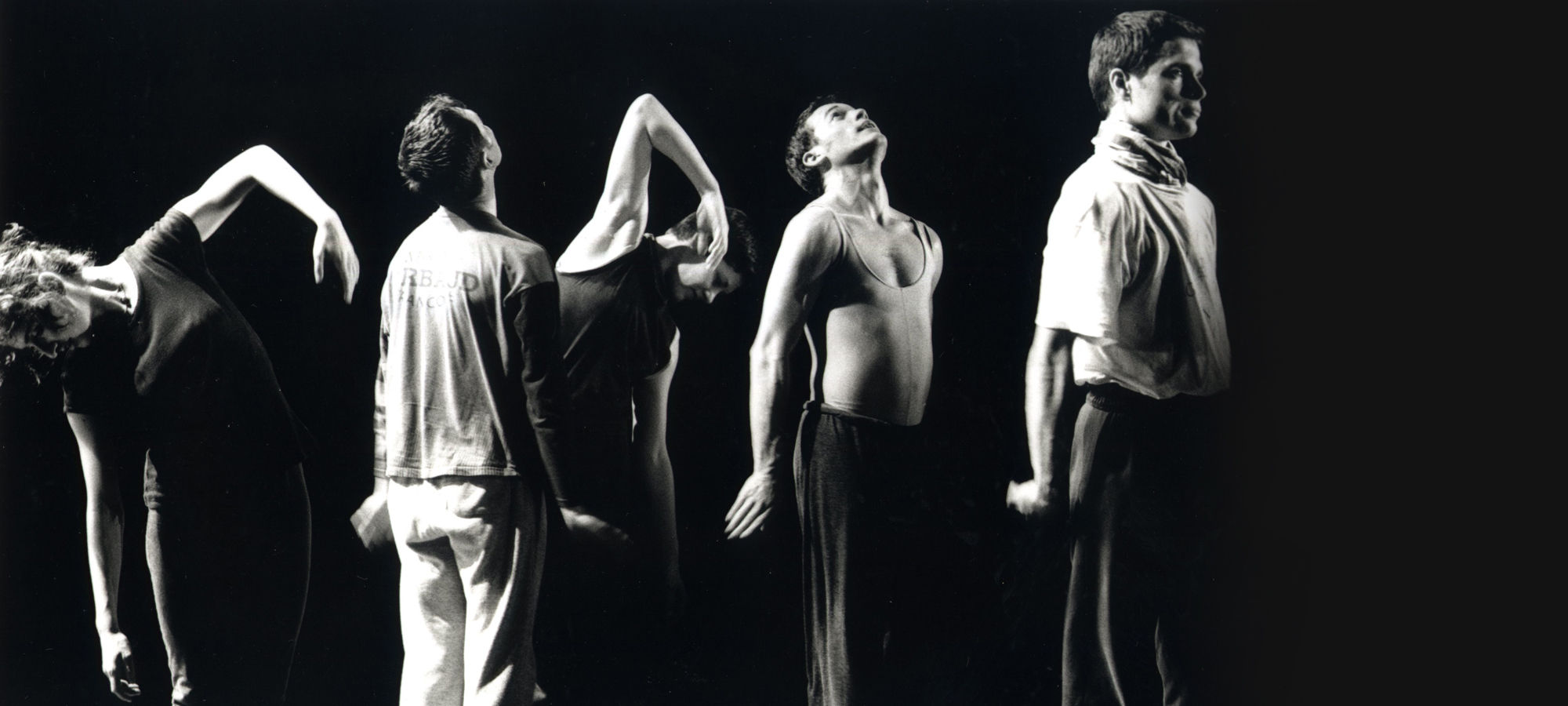
Anther
"It is quite difficult to impart meaning when you love dance as an abstract emanation or more simply as bodies in motion. This is even more difficult when these efforts refer to something real and intimate that we want to keep to ourselves, but that we also want to make alive, keep quiet and speak. Talk about it but remain quiet: maintaining this paradox certainly imparts behavior with singularity, work with originality and adventure with interest. Anthère, quintet, top part –protection– of the stamen (male organ of flowers) that contains pollen. A sort of plant condom. “Between you and me a necessary surface against which I lay.” In earth, fertilized. Dance is alive with the virtue and motion of a whip whose impact doesn’t hurt, sensitive, a substance that gets cloudy and absorbs when approached to melt with it, alive.”
Michel Kelemenis
Echos
Ballet 2000 Sonia Schoonejans
march.2005A torrent of Kiss“Ten years separate Besame (…), Michel Kelemenis’s recent creation, from Anthère, the other work in the same program. If the choreographer, now based in Marseille, has since gone through a period devoted more to solos and small forms in general, he has lost nothing of his instantly recognizable, sensual and refined writing that exemplifies these two works. Anthère, whose etymological meaning evokes a sort of plant condom, is a short work glorifying love and safe sex. Premiered in 1994, when the AIDS epidemic was hitting the dance world in full force, it’s a choreographic plea for prevention. Unlike choreographers such as Bill T. Jones who, with Still Here, exposed the ravages of this disease, Kelemenis addresses the problem from a different angle and, avoiding pathos, opts for pleasure while still affirming the necessity to protect oneself. All kinds of danger converge on the kiss the performers exchange but this dance is tender, precise and fluid.”
Libération Marie-Christine Vernay
march.1994
Without moralizing, without any notion of blame, Kelemenis speaks about AIDS, or rather protection. Anthère is taken from flora. Between the caducei strewn across the stage, and backed up by the tempestuous and boisterous work of André Serré who doesn’t hesitate to let sparks fly in the middle of the show, the 2 female and 3 male dancers are tremendously turbulent. Multiplying entrances and exits, tipping over exquisite kisses, he exploits the free movement of bodies.
Kelemenis, gourmand, doesn’t choreograph lust but desire. Up until the final scene when 2 bodies passionately embrace while a 3rd interloper, conscientiously and tirelessly, replaces the material separating the 2 genitals.
Saisons de la danse Philippe Verrièle
march.1994
Anthère, sets, a posteriori, the tone for the “Five-Dancers” evening by evoking romantic encounters and their risks in times of AIDS : they are beautiful, sensual and collapse after embracing. The allegory can sometimes seem heavy handed, particularly in the blunt evocations of the necessity for safe sex, but in this realm, it’s perhaps better to say a little too much rather than not enough. With time, the work develops a patina of subtlety.
The Clins de lune program is a meditation that says more about today’s love than academic studies or media campaigns do. As for Kelemenis, he’s becoming a talent to be reckoned with.




